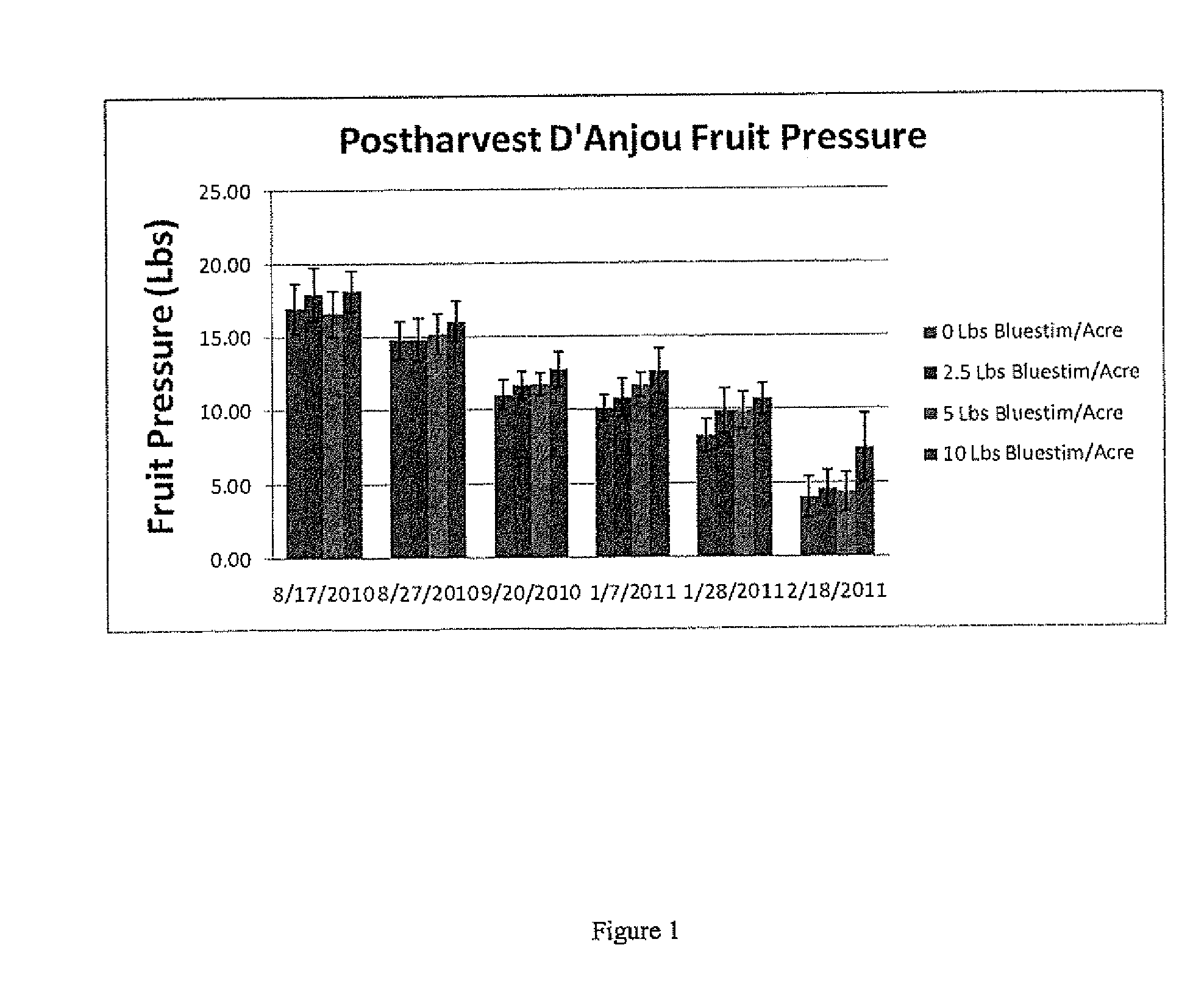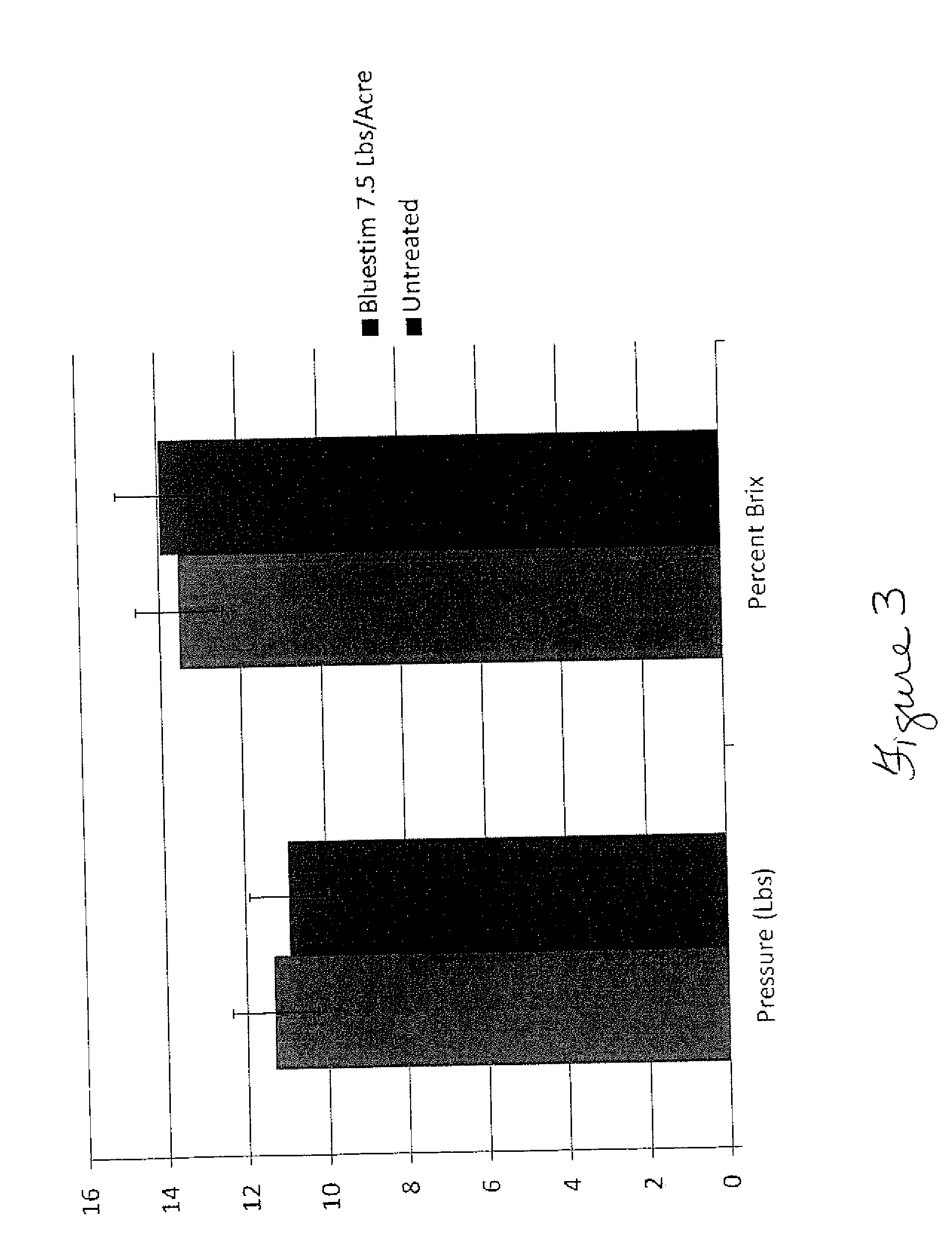Use of photosynthetic pigment stabilizing agents to regulate ripening and quality in fruits and vegetables
a technology of photosynthetic pigment and stabilizing agent, which is applied in the direction of biocide, animal repellents, milk preservation, etc., can solve the problems of affecting the ripening of treated fruits, wanes of the effect of 1-mcp treatment, and certain fruits that do not respond well to 1-mcp treatment, so as to prevent or slow the onset of senescence and prolong the time period
- Summary
- Abstract
- Description
- Claims
- Application Information
AI Technical Summary
Benefits of technology
Problems solved by technology
Method used
Image
Examples
example 1
[0056]Research described in this Example shows that application of a natural byproduct of molasses, glycine betaine, to d'Anjou pears before harvest yields firmer pears compared to untreated pears stored in the same post-harvest conditions (FIGS. 1 and 3). Application increased the fruit firmness in a dose dependent manner, with applications of 10 lbs / acre yielding the firmest pears.
[0057]Glycine betaine treated pears also display a decrease in soluble sugars measured in % BRIX in a dose dependent manner (FIGS. 2 and 3). Both firmness and % BRIX are used as an indicator of fruit ripeness.
[0058]As time passes, however, glycine betaine treated pears soften and exhibit increases in % BRIX, indicating that the effect is temporary, and that ripening eventually occurs after treatment.
PUM
 Login to View More
Login to View More Abstract
Description
Claims
Application Information
 Login to View More
Login to View More - R&D
- Intellectual Property
- Life Sciences
- Materials
- Tech Scout
- Unparalleled Data Quality
- Higher Quality Content
- 60% Fewer Hallucinations
Browse by: Latest US Patents, China's latest patents, Technical Efficacy Thesaurus, Application Domain, Technology Topic, Popular Technical Reports.
© 2025 PatSnap. All rights reserved.Legal|Privacy policy|Modern Slavery Act Transparency Statement|Sitemap|About US| Contact US: help@patsnap.com



